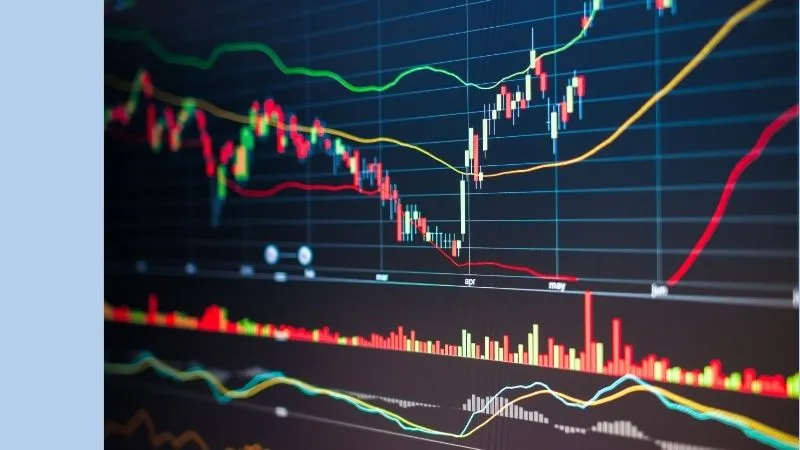How do you know if ASX shares are cheap or expensive?
It’s a core consideration for any serious investor. After all, if you don’t have any notion of what a company is really worth, how can you have any expectation that your shares will be worth more in the future?
The best company on the planet is not worth an infinite amount. It’s entirely possible to lose money on a strong, growing business if you pay too much. Similarly, even a terrible business is often worth more than zero — plenty of ‘deep value’ investors have made good returns buying into a dog at a low enough price.
So valuation is key. The problem is, how can you know what a company is really worth?
On one level a company, as represented by the market price of its shares, is worth whatever people are prepared to pay — no matter how irrational that may be. In this sense, the market is always right.
But history shows that, sooner or later, prices tend to be driven by the underlying fundamentals of a business. There’s a certain financial gravity that always — ALWAYS — brings prices back to something sensible.
As Benjamin Graham famously said, in the short run the market is a voting machine, and in the long run it is a weighing machine.
Those with an ability to determine what’s (roughly) sensible have a great advantage; buying shares when they are below this level, and selling if they go too much beyond this point. Provided, of course, they have the patience and fortitude to wait for the market to come to its senses.
A sensible price
The academics tell us that the true ‘intrinsic’ value of a company is the total value of all future cash flows, discounted back to their present value. Let’s unpack that.
Imagine if I were to offer to pay you $100 in 12 months. What’s that offer worth to you today?
Clearly, you’d be crazy to pay me $100 for that deal. After all, you could take that money, pop it in a term deposit and get back, say, $104 in 12 months. That’s the time value of money.
So my offer is worth less than $100 today. But how much less? Well, that depends on what return you want to get. Obviously, the lower the price the better the return. Pay me $50 today, and you’re looking at a 100% return in just 12 months. Pay me $90, and your return would be about 11%.
Of course, my offer isn’t the only investment option available to you. So the price you’re prepared to pay should also depend on what return you could reasonably expect elsewhere. This is the next core concept — opportunity cost.
When you ‘invest’ with me, your money is tied up and unavailable for other opportunities. And, as a rational person, you’re always going to take the best deal. If a big bank were offering you a 11% interest rate, you probably wouldn’t offer me $90 for my deal. Why take the risk that I don’t make good on my promise, when you can essentially guarantee an 11% return with the bank?
So the return you want, and therefore the price you should be willing to pay, should be based on a base ‘risk-free’ return, plus a ‘risk premium’ — the extra return you want to compensate you for the chance I don’t make good on the deal.
(That’s why interest rates are so important to valuation. In a high interest rate world, you’d need a better potential return — and therefore a lower buy price — to lure you away from the relative safety of a term deposit. That’s a big part of the reason that shares have done so well as global rates have fallen.)
Back to reality
The theory is all pretty straightforward and logical, but in the real world we can’t ever know for sure what a company will earn next year, let alone what it will be earning 5 or 10 years from now. Likewise, we can’t be sure of what interest rates will do in the future.
There are other complications too. Statutory earnings don’t always accurately reflect the cash flows of a business, due to things like amortisation of intangible assets, capital expenditure requirements and different revenue recognition policies.
And the return one investor requires can differ significantly to what another will accept.
That’s why you can see such wildly different valuations from different investors.
Even if your valuation is perfect, it can take a long, long time before the market recognises the true value of a company. And the price can move against you in a serious way in the interim.
Little wonder, then, that most retail investors find it all too hard. And why there is great lure in simple (but, to my mind, flawed) investment approaches.
But all is not lost.
Keep it simple, stupid
Despite the many difficulties associated with accurately pricing a share, it’s still an incredibly valuable exercise. If only to show you what needs to happen for the current market price to prove sensible. It also helps ground your expectations, focusing them on the performance of the business instead of the daily gyrations in market prices
Importantly, we don’t need to get into the minutiae of advanced discounted cash flow analysis. Far better to be roughly right, than specifically wrong.
One approach I use is to try and estimate what a company will be trading at a few years into the future. I do that by coming up with a rough estimate for sales or earnings at that point, applying a sensible estimate of the price-to-sales or price-to-earnings, and then discounting it back to a present value.
Take logistics software company WiseTech Global (ASX: WTC). As you can see from the associated company page on Strawman, this is a business that enjoys a strong competitive position, high recurring cash flows, high margins and huge growth potential — plus a host of other attractive attributes. There’s a lot to love…except the current price.
In approaching this valuation, I assumed that sales would continue to grow by about 40% per year for the next few years (roughly what it’s done historically, and the amount sales are expected to grow by in the current year). I also assumed that the market would continue to pay a hefty multiple — 7 times sales or 40 times earnings (ratios that are both well above long-term averages, even for growth stocks). I then discounted that back by 10% each year (the return I’d personally want for investing in WiseTech) to get $10.50. That’s about 35% below the current market price!
Now, I could easily be wrong. There’s every chance that WiseTech could grow at a faster rate, or that the market will be prepared to pay higher multiples in 2021 — but at least I know what needs to happen for the current price to be seen as cheap.
Summary
Too often we buy shares simply because “they are going up”, or because they have a great story. But that approach usually ends in tears.
Take the time to understand a business, and estimate what kind of growth can reasonably be expected — even if its a rough approximation. Use that to estimate a future value, and discount that back to a price that allows for a decent return between then and now.
You’ll never get it exactly right, but at least it gives you an understanding of what the market is currently expecting, and you can then determine whether or not you think that is reasonable.
Importantly, be sure to keep an open mind and be prepared to change your assumptions as the facts, or your interpretation of them, change. The market tends to punish hubris, and we should always be looking to destroy our own assumptions.
Also, because this is such an inexact science, you should always apply a generous margin of safety. Even though I estimate Wisetech to have a fair value of $10.50, I’d prefer to pay less than this to account for the fact that my valuation is almost certainly wrong.
One word of caution, though. You shouldn’t be too fussy when it comes to high quality businesses. As Buffett says, far better to buy a wonderful business at a fair price, than a fair business at a wonderful price.
Happy investing!
Get More Insights On Strawman – Australia’s Premier Investment Club
This article contains general financial advice or information only (under AFSL: 501 223) and should not be relied upon. This information does not take into consideration your needs, goals or objectives. Therefore, you should consult a licensed financial adviser before acting on any of the information presented here. Past performance is no guarantee of future returns. Andrew Page and Strawman hold no positions in any stocks mentioned.











